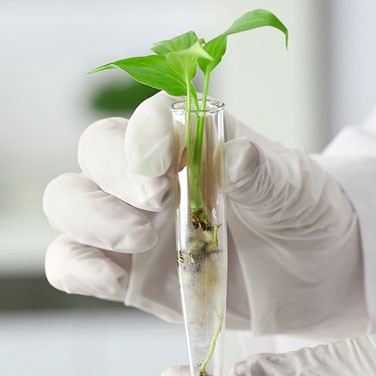Green Labs: Paving the Way for Sustainable Research
By Jill Jones
Industry Vice President, Academic & Government Markets
For me, there is nothing more inspiring than visiting an academic institution and seeing firsthand the incredible discoveries happening in research labs across the country. Fortunately, I visit with our university customers frequently and get to spend time learning about their research and discussing the issues that are important to them. I’ve noticed some common threads in these conversations and the topic of sustainability seems to come up almost every time. It’s on everyone’s mind and I can relate. We all want to find ways to preserve our environment for future generations, and labs are uniquely positioned to make a big impact. According to My Green Lab, laboratories consume five times more energy than regular office spaces. A 2015 article in Nature estimated that labs produced 5.5 million tons of waste in 2014. Those numbers are daunting, but they also indicate great potential. From my vantage point, there are three areas where universities and industry stakeholders are making changes to minimize their impact on the environment.
Green Initiatives
Many institutions are taking a parochial approach to sustainability by developing programs on their own campuses. For example, Florida A&M University is partnering with Duke Energy Florida to build a solar energy facility at its Brooksville Agricultural and Environmental Research Station. This is a great example of how sustainability efforts can advance the mission of a university while creating a source of clean energy for the surrounding community. Students will benefit from the hands-on learning experience of seeing a utility-scale solar power plant in action and the university will benefit from the revenue generated by lease payments.
Procurement practices play a key part in how campuses show their commitment to sustainability. Many universities have formal procurement procedures in place to ensure they are doing their part to shrink their carbon footprint. Stanford University, for example, has developed Sustainable Purchasing Guidelines for its faculty and staff to encourage and support the purchase of environmentally preferable products. They consider the total environmental impact of a product, like the amount of energy or water consumed during production and the environmental impact of the product’s disposal. Part of the program’s implementation included the purchase of new, energy-efficient lab freezers to replace older, less efficient models.
The university offers rebates to researchers who purchase appliances that are Energy Star certified.
Green Products
Lab suppliers also play an important role in sustainability, and need to align their missions with that of their customers, who are looking for greener products. We source sustainable products that are less hazardous and our R&D teams are developing products that use fewer resources to produce, offer sustainable packaging and disposal options, and are energy efficient. One of the biggest areas of opportunity for labs is cutting down on the energy used to power ULT freezers, which can amount to the same total as an average household every day. The Thermo Scientific TSX Series of Ultra-Low-Temperature Freezers is just one example of products that address energy reduction. This equipment has earned the U.S. Environmental Protection Agency’s Energy Star™ certification for its reduced energy consumption.
Green Practices
Green products are most effective when paired with green practices. My Green Lab, a non-profit based in California, is leading the development of green lab practices across the industry. They offer green lab certification and other resources for any lab looking to become greener. Their “Be Good in the Hood” program provides stickers that remind scientists to lower the sash on variable air volume (VAV) fume hoods when their work is complete. In a VAV fume hood, lowering the sash reduces the speed of the exhaust fan and the volume of air being exhausted. The energy savings from lowering the sash can be upwards of 40%. And their efforts don’t stop there. They’re partnering with manufacturers, engineering firms, and utility providers to develop new standards for measuring future sustainability efforts.
Lab suppliers also have opportunities to improve supply chain practices. Temperature-sensitive materials are often transported in packaging that is not easily recycled. To solve this issue, Thermo Fisher Scientific has developed recyclable all-paper coolers that protect products as effectively as expanded polystyrene and are less harmful to the environment. Inside the lab, we partner with manufacturers and suppliers to offer on-site lab recycling programs for the sustainable disposal of those necessary single-use items such as gloves, pipette tips, and cartridges.
Sustainability involves every aspect of the lab industry. To create lasting change, we must start thinking differently about the way we operate, and I’m inspired to see so many institutions following that path. There is a role for every stakeholder, and we can learn from and support each other in the process.



